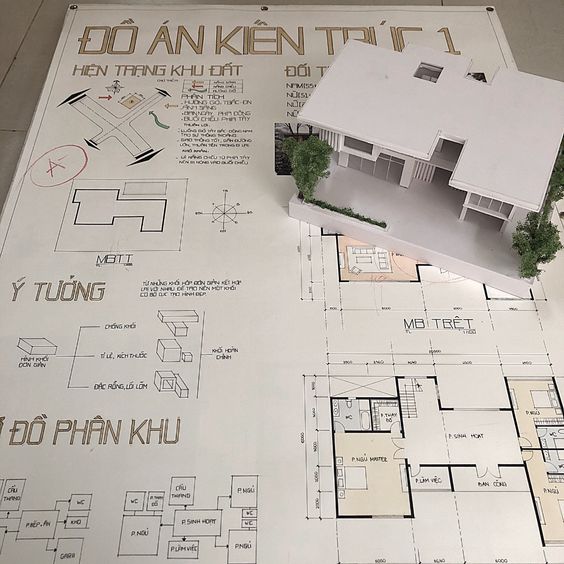Architectural Plates: A Comprehensive Guide
Architectural plates? Whether you’re a student of architecture, a professional architect, or simply someone intrigued by the world of building design, this article is here to provide you with a comprehensive guide to architectural plates. From their purpose and installation to the complexities involved, we’ll delve into the topic to give you a better understanding. So, let’s begin!
Table of Contents
1. Introduction: Understanding the Significance of Architectural Plates
Architectural plates, specifically wall plates, play a crucial role in the construction of buildings. In the context of this article, we’ll focus on timber wall plates used in masonry walls supporting timber roofs. These wall plates are essential for ensuring the seamless transition from the masonry wall to the roof structure, providing a secure base for the roof timbers.

2. The Purpose of a Wall Plate
A wall plate serves as a connecting element between the masonry wall and the roof structure. It enables joiners to work efficiently by providing a correctly lined and leveled surface for fixing the roof timbers. This is particularly important in timber roof structures where identical profiles are used for rafters and ceiling joists, allowing for streamlined and repetitive installation processes [2].
3. Sizing Considerations for Wall Plates
Determining the appropriate size for a wall plate is crucial for achieving structural integrity. Factors such as the load-bearing requirements, roof design, and local building regulations influence the sizing process. Consulting relevant guidance, text books, and trade literature can provide valuable insights into determining the suitable dimensions for a wall plate [2].
4. Installation Methods for Wall Plates
Installing a wall plate involves careful attention to detail. It requires precise alignment and fixing to ensure stability and reliability. Various methods and techniques can be employed based on the specific project requirements and the chosen approach for connecting the wall plate to the masonry wall. These installation methods should align with industry best practices and local building codes [2].
5. Holding Down and Lateral Restraint of Wall Plates
To enhance the structural performance of wall plates, additional measures like holding down and lateral restraint may be necessary. Holding down mechanisms help secure the wall plate against uplift forces, while lateral restraint systems provide stability against horizontal loads. The selection and implementation of these measures depend on factors such as wind exposure, roof design, and geographical location [2].
6. Is the Wall Plate Structural?
While wall plates contribute to the overall structural stability of a building, they are not considered primary load-bearing elements. The primary load-bearing components are the walls and supporting elements, such as columns and beams. Understanding the structural role of a wall plate is essential to ensure proper design and construction practices [2].
7. Preferred Solutions and Recommended Approaches
Given the complexity and variability of wall plate design, relying on recommended solutions and preferred approaches is vital. While there is no one-size-fits-all solution due to the diverse nature of construction projects, experienced architects and industry experts often provide valuable insights and guidelines. Familiarizing yourself with these preferred solutions can enhance your expertise in building technology and improve your ability to develop well-designed architectural plates [2].
8. Summary: Key Points about Wall Plates
To summarize the key points discussed in this article:
- Wall plates are essential connecting elements between masonry walls and timber roofs.
- They provide a correctly lined and leveled surface for fixing roof timbers.
- Sizing considerations depend on load-bearing requirements and local regulations.
- Installation methods must align with industry best practices and building codes.
- Additional measures like holding down and lateral restraint may be required.
- Wall plates are not primary load-bearing elements but contribute to structural stability.
- Preferred solutions and recommended approaches can guide the design process [2].
9. Exploring Additional Common Architectural Details
Architectural plates encompass various other elements and details beyond wall plates. Exploring these details can further expand your knowledge of architectural design and construction. Stay tuned for future articles where we’ll delve into other common architectural details and their intricacies.
10. Conclusion
Architectural plates, particularly wall plates, are vital components in building construction. They facilitate the seamless integration of timber roofs with masonry walls, providing stability and a secure base for the roof structure. By understanding the purpose, sizing considerations, installation methods, and preferred solutions, architects and professionals can develop expertise in creating well-designed architectural plates.
FAQs
1. Can wall plates be used in other construction scenarios?
Yes, wall plates can be used in various construction situations, such as on sleeper walls supporting timber floor joists [2].
2. Are there comprehensive technical resources available for architectural plates?
While there isn’t a single comprehensive resource, you can refer to relevant guidance, text books, and trade literature to gain insights into architectural plate design and construction [2].
3. What are the primary load-bearing elements in a building?
The primary load-bearing elements in a building are the walls and supporting components, including columns and beams. Wall plates, although important, serve a supporting role and are not primary load-bearing elements [2].
4. How can I ensure compliance with local building codes for wall plates?
To ensure compliance with local building codes, it is recommended to consult the relevant codes and regulations applicable in your area. Additionally, seeking guidance from experienced architects or building professionals can provide valuable insights [2].
5. Where can I find more resources on architectural design and construction?
You can explore various online platforms, architectural publications, and academic resources to expand your knowledge of architectural design and construction. Additionally, joining professional organizations and attending industry conferences can offer valuable networking opportunities and access to educational resources.
